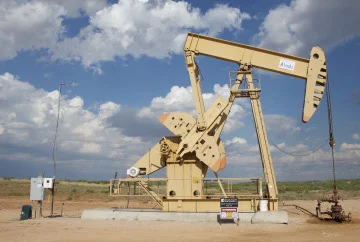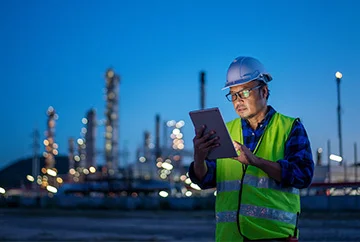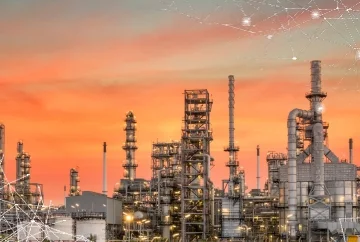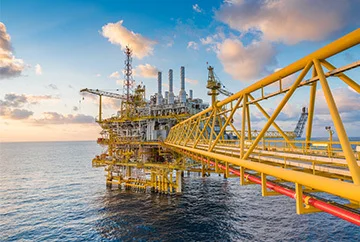#3.5 Vessel Maintenance and Monitoring
AI has a huge role in enabling the supply chain management of the oil and gas industries. One of its many applications includes vessel maintenance, tracking, and monitoring. Through AI-powered tools, businesses can track deliveries to handle demand from end consumers and inventory management. In addition, companies are now signing long-term agreements with AI solutions providers to deploy tools like lubricant condition monitoring systems. This reduces fuel consumption and, by extension, greenhouse gas emissions from complex offshore operations.
#3.6 Refinery and Plant Inspection
Autonomous drones are being deployed to reduce the risk to plant and refinery personnel's health and safety. The infrared sensors on these drones are highly sophisticated and are used for plant equipment and ground surveillance. When coupled with AI-powered smart inspection tools, the system also improves product lifecycle management, reducing time and costs using cognitive analytics and predictive asset optimization. The collected data is later used to eliminate forced outages and disruptions in the supply chain.
#3.7 Extraction Pump Monitoring
Glitches in the extraction pump can cause major disruptions in the upstream oil and gas industries. For instance, in 2019, a faulty well pump at an unmanned platform in the North Sea recurringly disturbed the production for Aker BP. The solution they deployed was an AI program for monitoring data from sensors on the pump. The tool ensured the production remained undisrupted thereon by flagging glitches before failure. This brought together the best of IoT and AI to enable equipment and pipeline operators to preempt expensive extraction pump failures.
#3.8 Oil Well Life Prediction
Demand for higher short-term volumes has led businesses to sacrifice the amount of oil that can be recovered. To tackle this issue, AI offers several powerful benefits across the entire oil and gas value chain and helps oil and gas upstream assess the life of reservoirs and oil wells. AI tools read the geology of an area and determine which wells are at risk of depletion. Furthermore, instead of testing wells individually, machine learning is being used to optimize the entire system.
Benefits of Using AI in Upstream Oil and Gas
Reduction in Dry Well Exploration
Modern AI-based techniques have enabled upstream oil and gas companies to ascertain geological features like rock formation for ensuring they don't waste time exploring dry wells. In addition, geologists are utilizing well-log data to develop ML models with existing and new seismic profiles, and it's helping them make an educated guess regarding the location of potential oil and gas reservoirs.
Click to zoom in
Quicker Closure of Exploration/Drilling Projects
Companies actively involved in the drilling/exploration projects are using AI to develop algorithms for drilling with precision, thus reducing the risk of oil spills, accidents, and fire. The same technology also helps them enhance the penetration rate. A different application of AI helps these businesses optimize their production by identifying areas where they are lagging.
Better Equipment Availability and Uptime
AI helps businesses increase their revenue by cutting unnecessary maintenance costs and downtimes from equipment unavailability. While preventive maintenance is conducted on the manufacturer's schedule,
AI-powered predictive maintenance uses real-time process and equipment data build trends to forecast changes in the process equipment. This helps improve operational productivity, and thus, uptime.
Cost Savings
According to
E&Y, 52% of oil and gas majors are implementing AI/ML in their business, and there's a good reason for it. Work in upstream oil and gas industries was once considered highly labor-intensive, but AI has helped change this perspective. Companies are now maximizing production while minimizing costs, all thanks to AI-powered process automation and predictive maintenance.







